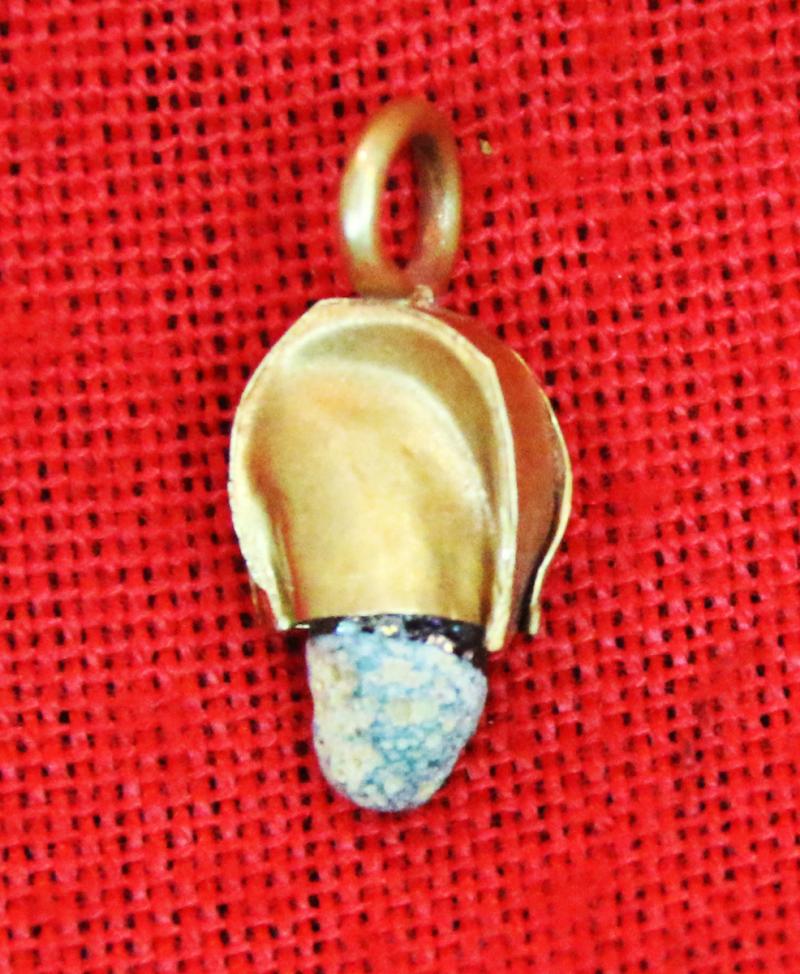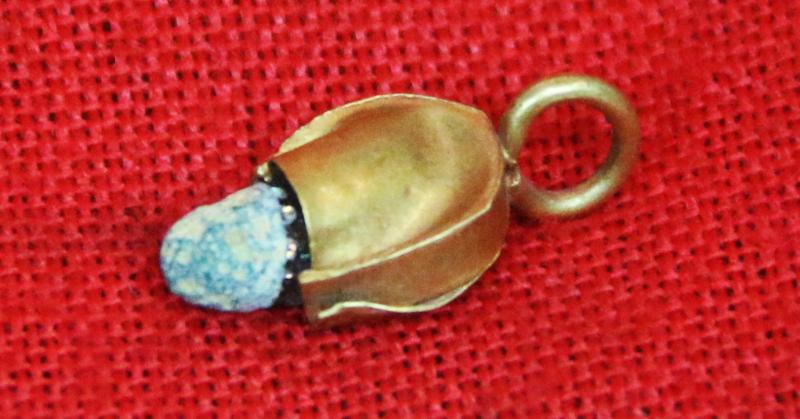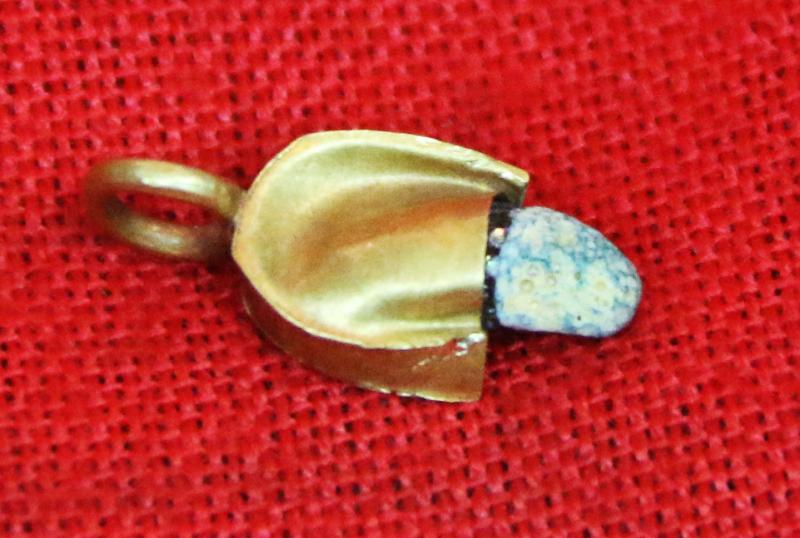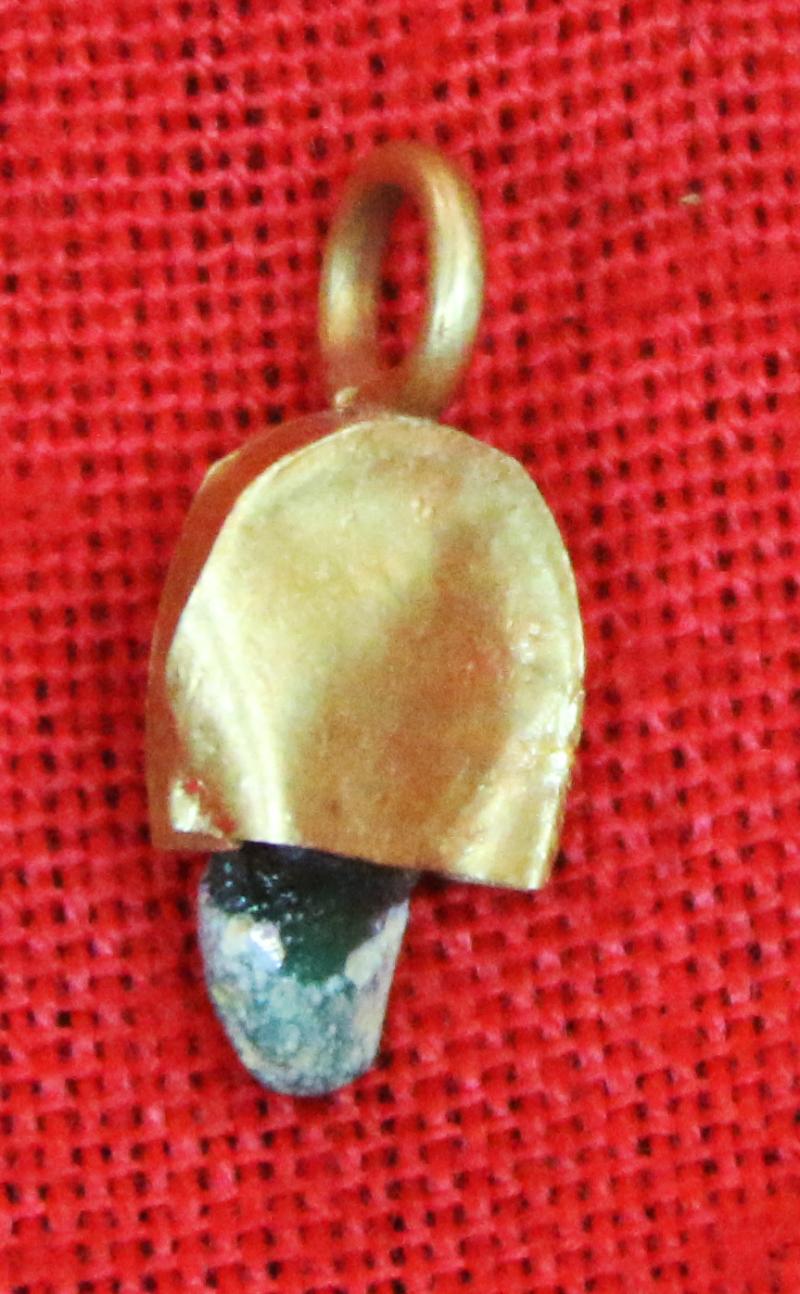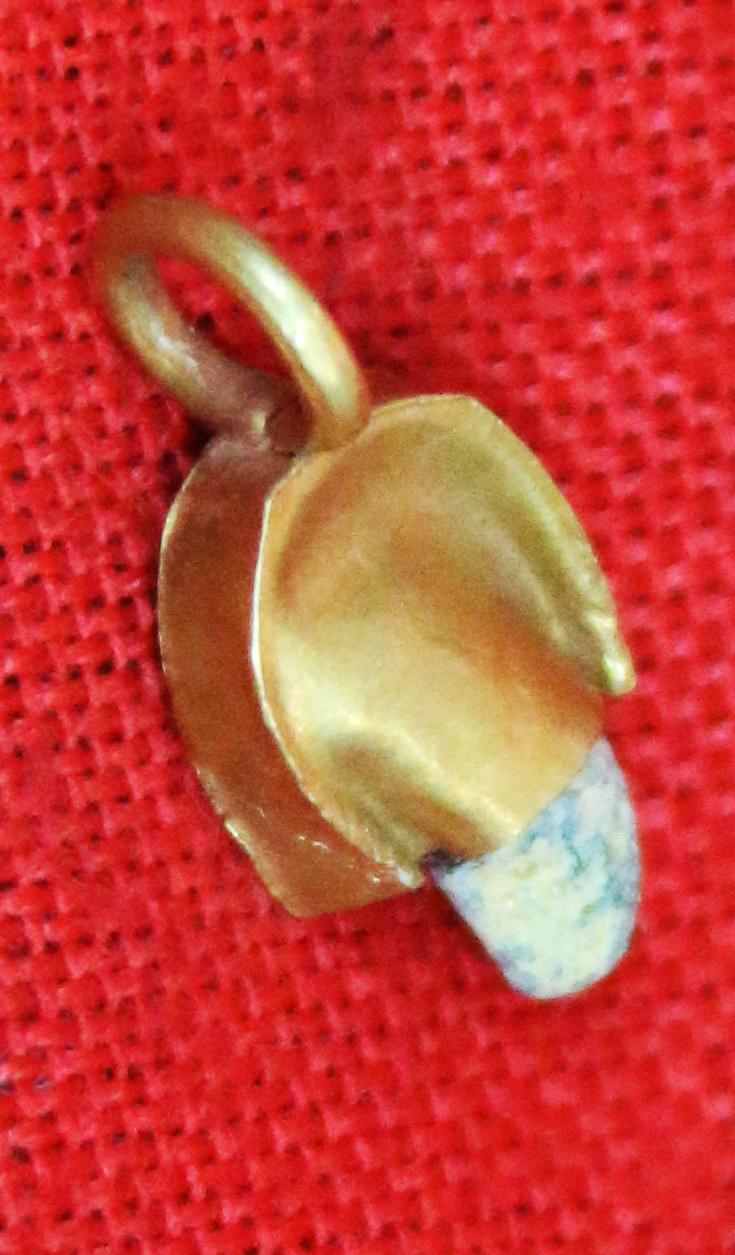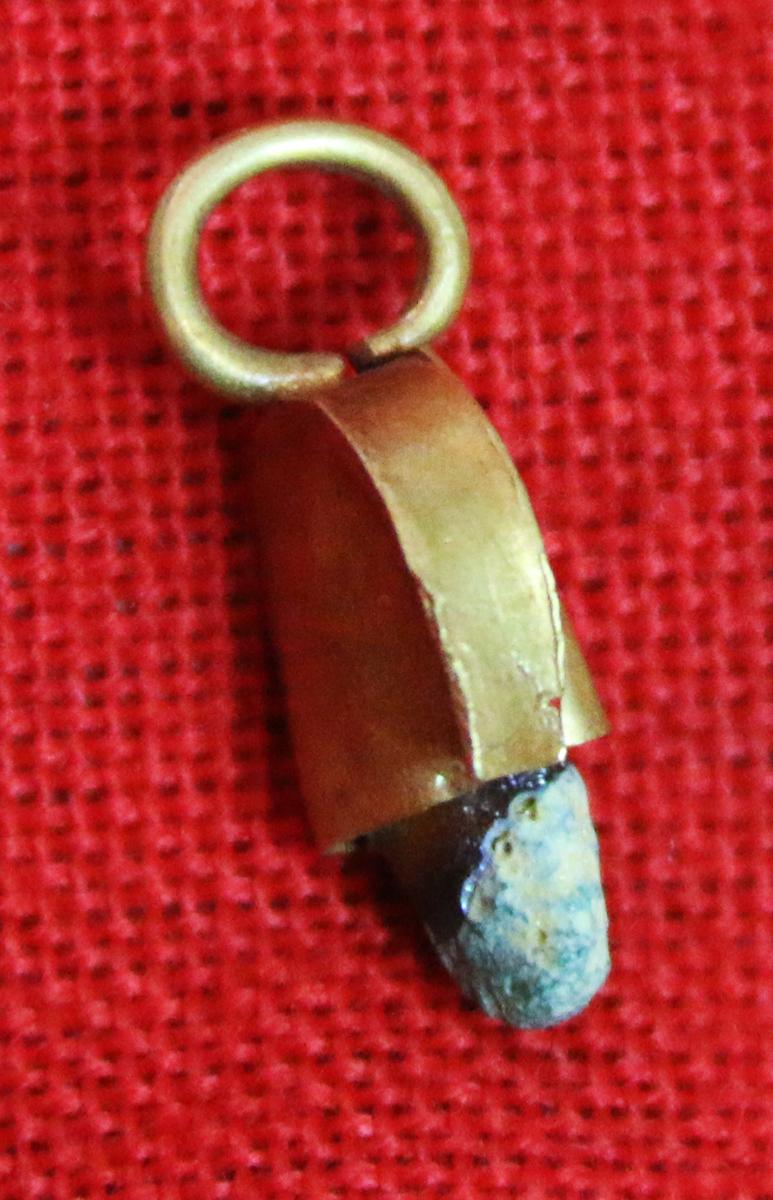Original Solid Gold Mounted Viking Elfshott Amulet. Used As Protection Against Wið Færstice & Gif Hors Ofscoten Sie, Created By Invisible Elf Arrows or Witchcraft. "There Every Herd, By Sad Experience, Knows How, Winged With Fate, Their Elf-Shot Arrow..
An absolute stunning and beautiful, original & historical piece of small mystical solid gold jewellery, a protective amulet of an ancient Viking around 1200 years old. A Viking glass bead talisman fashioned into a arrow form encased in pure gold with a ring mount. The same type of amulet as such as the popular amulet of Thor’s Hammer. This is certainly one of the best examples we have had in over 50 years.
Elves were thought to shoot darts or arrows where such pains had no obvious external cause. Elfshott associated with "elf arrows", Neolithic flint arrowheads or glass beads used as amulets.
Elfshot or elf-shot is a medical condition described in Anglo-Saxon medical texts (notably Wið færstice) believed to be caused by elves shooting invisible elf-arrows at a person or animal (most often cattle), causing sudden shooting pains localized to a particular area of the body. Modern diagnoses might include rheumatism, arthritis, muscle stitches or cramps.
The term "elf-shott" is variously understood and used across different contexts. It has been interpreted as referring not only to disease caused by elves using projectiles but also to witchcraft involving projectiles without elves or fairies. Additionally, it can denote prehistoric arrowheads believed to be used by fairies or witches to cause harm or serve as protective amulets. Consequently, scholarship on elf-shot has been marked by significant confusion, with different sources applying divergent definitions and missing connections between them.
Origins and background
Before the causes of certain diseases or ailments were scientifically evidenced, they were often attributed to supernatural phenomena, and in such cases often seen as the malevolent actions of supernatural beings. It has been argued that attributing certain aches and pains to the arrows or "flying venom" of elfkind was a practice common throughout Anglo-Saxon and Scandinavian Europe.
The Old English spell Gif hors ofscoten sie, "if a horse is elf-shot," meaning some kind of internal injury, may be an allusion to the magical elf-shot. However, the term aelfsogoða, which describes the internal pain from jaundice or a disorder of bile, is perhaps a more suitable fit. Along with elves, there also exist historical claims of witches firing elf-arrows. Per the testimony of Scottish accused witch Isobel Gowdie, these elf-arrows were given to witches by the Devil, who asked them to be fired (by flicking with the thumb, rather than shot with a bow) in his name.
The noun elf-shot is first attested in a Scots poem, "Rowlis Cursing," from around 1500, where "elf schot" is listed among a range of curses to be inflicted on some chicken thieves. The term may not always have denoted an actual projectile: shot could mean "a sharp pain". But in early modern Scotland, elf-schot and other terms like elf-arrowhead are sometimes used of neolithic arrow-heads, apparently thought to have been made by elves. In a few witchcraft trials, people attested that these arrow-heads were used in healing rituals, and occasionally alleged that witches (and perhaps elves) used them to injure people and cattle.34 A 1749–50 ode by William Collins includes the lines:35
There every herd, by sad experience, knows
How, winged with fate, their elf-shot arrows fly,
When the sick ewe her summer food forgoes,
Or, stretched on earth, the heart-smit heifers lie
In later medieval prayers, Elves appear as a threatening, even demonic, force. For example, some prayers invoke God's help against nocturnal attacks by Alpe. Correspondingly, in the early modern period, elves are described in north Germany doing the evil bidding of witches; Martin Luther believed his mother to have been afflicted in this way. As in Old Norse, however, there are few characters identified as elves. It seems likely that in the German-speaking world, elves were to a significant extent conflated with dwarves (Middle High German: getwerc). Thus, some dwarves that appear in German heroic poetry have been seen as relating to elves. In particular, nineteenth-century scholars tended to think that the dwarf Alberich, whose name etymologically means "elf-powerful," was influenced by early traditions of elves.
Ref;
Hall, Alaric ‘Getting Shot of Elves: Healing, Witchcraft and Fairies in the Scottish Witchcraft Trials’, Folklore 116 (2005b), 19-36
McGowan, Joseph ‘Elves, Elf-shot, and Epilepsy: OE ælfādl, ælfsiden, ælfsogeþa, bræccoþu, and bræcsēoc’, Studia Neophilologica 81 (2009), 116-120
3/4 of an inch long
Elfshot amulets or pendants, popular in Viking and Anglo-Saxon societies, typically contain a small, often oval-shaped, stone or glass bead, sometimes fashioned into an arrowhead shape, set within a precious metal (often gold) frame. Ours is fine pure gold. These pendants were believed to offer protection against invisible elves who were thought to shoot invisible arrows causing internal pain and illness.
The core element of the pendant or amulet is usually a small, smooth stone or glass bead. These were sometimes shaped like arrowheads or other simple shapes.
The stone/bead is encased in a metal setting, often gold, which also includes a loop for suspension from a chain or cord. The pendants or amulets were not just decorative; they were talismans believed to ward off the harmful effects of "elfshot," a folk belief about illness caused by unseen elf arrows.
Code: 25799

